With Blackberry and TCL entering into a multi-year deal for the design, branding and construction of Blackberry phones going forward, we’ve all been eagerly awaiting the next chapter of the Blackberry story. At MWC this year, the first page of that story was turned with the announcement of the Blackberry KEYone.
The KEYone is many things, including the first Blackberry device made under the TCL licence, the first Android-powered Blackberry with a fixed keyboard and overall a great device with some really core business features that can’t be overlooked.
Many were waiting on this release of this first device to prognosticate on the future of Blackberry hardware and to see how TCL would steward the Blackberry brand. Well, I’m not arrogant enough to prognosticate but if the KEYone is any indication, the Blackberry brand has a bright future and TCL has done the memory and future of Blackberry proud — this is a worthy device and represents outstanding value.
Blackberry KEYone Hardware
The KEYone is pegged as Blackberry’s top end device, but there’s an elephant in the room, spec junkies may not be pleased that the device is powered by the Snapdragon 625 and not the top of the line 8xx SOC.
Well as far as I’m concerned for daily use it made little to no difference, this phone was rock solid. So if you’re a spec junkie you may want to pass on by, but if you care more about real world performance and in hand use then the Snapdragon 625 in the KEYone gave me no issue.
What’s inside
Those with a keen eye will note that Motorola’s more recently released Moto Z2 Play comes with a slightly updated Snapdragon 626, and Scott found absolutely nothing wanting in his review. The 625 is similar in the KEYone.
The KEYone’s specs include a 4.5-inch IPS LCD 1,680 x 1,080 display, a Snapdragon 625 paired with an ample 3GB of RAM, 3,505 mAh non-removable battery, USB type C, a 12 MP front facing camera 8MP rear facing camera and 32GB of internal storage with a MicroSD slot.
Check out the full specs below.
| Key Specifications: | BlackBerry KEYone |
|---|---|
| Release date | March 2017 |
| Screen size | 4.5-inch |
| Screen technology | IPS LCD |
| Resolution | 1,680 x 1,080 |
| PPI | 434 |
| Rear camera | 12MP |
| Rear aperture | f/2.0 |
| Front camera | 8MP |
| Front aperture | f/2.2 |
| Chipset | Snapdragon 625 |
| Core config | 8 x 2.0GHz |
| RAM | 3GB |
| Storage | 32GB |
| MicroSD | Yes, up to 2TB |
| Battery | 3,505 mAh |
| Battery removable | — |
| Connector | USB C |
| Headphone Port | Yes |
| Headphone Location | Top |
| Speaker Configuration | Bottom |
| WIFI standards | 802.11 a/b/g/n/ac |
| Bluetooth standards |
|
| NFC | Yes |
| Location | A-GPS |
| Android OS | Android 7.1 |
| Vendor skin | BlackBerry |
| Dimensions | 149.09 x 72.39 x 9.39 mm |
| Colours | Black |
From a specs perspective, there’s “nothing missing”, there was simply nothing I couldn’t do with the KEYone, nothing I threw at it it couldn’t handle. The KEYone is a testimony to what can be achieved with the combination of modern Android, modern SOC/hardware components and the OEMs attention to optimisation of a device, I could (and have been) using the KEYone every day.
Physical keyboard
A device’s keyboard would rarely rate a mention in an Ausdroid review, however, the KEYone is not an ordinary device. The inclusion of a non-removable physical keyboard is one of its defining attributes, and as such bears closer discussion.
So how was the keyboard? From an engineering perspective, it is solid, each press gives a reassuring little click and unlike a software keyboard, I actually found I was less prone to click the wrong button while typing.
This increase in accuracy did for me come at the expense of speed at times and I have to admit I was paying significantly more attention to typing than I normally would as I was ‘learning the keyboard’. I’m unsure if I would one day be as proficient as I am with an onscreen keyboard. Let’s take a step back however and quickly round up the keyboard and how it integrates with Android.
For simple typing of letters, especially lower case letters the keyboard works exactly as you would expect, you press the “k” key to get the letter, you guessed it, k. Typing capitols, number and symbols isn’t complex so much as request a little training or time to develop muscle memory.
The keyboard has 3 “function” keys alt, sym and up arrow (I’ll call that shift). Each key on the keyboard is capable of outputting 3 characters, eg the k key can do k, K and ‘. For the rest of the symbols, we’ve come to expect from a smartphone KEYone has the sym button. Pressing the sym button launches an on-screen menu with all of the standard symbols you would be expecting.
As you type the onscreen portion of the keyboard will give you text predictions, just like most modern Android keyboards. One great feature of the KEYone keyboard is to select one of the predicted words you simply swipe up on the ⅓ of the keyboard under the word you want, this makes using predictions really quick and intuitive, to the point where I keep trying to do it on other devices (hey Gboard add this please).
How did I find typing? For simple typing where I didn’t need caps, punctuation or symbols it was fast, faster than an on-screen keyboard I’d say. However, I have to admit it took a few weeks to start to develop the muscle memory for using the alt and shift keys.
Once I’d developed that muscle memory I wouldn’t say I was faster with the physical keyboard when having to use lots of symbols, for example, passwords, was a little harder than onscreen keyboards but overall I think that I could adapt to the physical keyboard if it was the only device I used, swapping back and forth did mess with me a little #technerproblem.
Will you like a physical keyboard? Well, if you’ve had one before and liked it then yes, if you’ve never used a physical keyboard and you’ve got an open mind then you may.
Build quality
One of the things I was most impressed by with the KEYone was it’s distinctive design and style. This is a premium device from a build perspective with a precisely engineered all metal frame, striking and non-slip rubber back and a solid reliable hardware keyboard, for those that love them Blackberry keyboards are back.
In a world of same same, rounded 2.5D glass rectangular blobs the KEYone dares to be different. Perhaps this is more in homage to traditional Blackberry design than design courage itself? However, the end result is a visually and physically distinct phone and that’s a very good thing, especially when it’s a stylish and modern looking device like this one.
Another differentiator of the device is the Blackberry convenience key. In addition to the power and volume keys the KEYone includes another mappable button they call the convenience key. This button can be mapped to open any app, speed dial any contact, quick launch a chat and numerous other shortcuts.
The placement of the key is a bit frustrating being on the middle of the device below the volume keys on the right-hand side. I have to admit I struggled with not hitting it, however, if this was your only device I think you would quickly adapt. Personally, I would have placed it above the volume key, harder to reach but harder to accidentally hit.
Blackberry KEYone Camera
While the KEYone was squarely aimed at “professionals” that doesn’t mean TCL forgot to include the other more personal features, and that includes the camera. The KEYone comes with a very capable combination of a 12MP f/2.0 rear and a 8MP f/2.2 front-facing cameras.
For me the camera experience comes down to two important elements, how quickly can the camera load, and how well can it take a shot when I don’t have time to frame and focus? Personally, I’m not so worried about low light photography as the rest of the tech world, but hey be together, not the same.
From a loading perspective I found the KEYone to be adequate, typically it would load within a few seconds and would be ready for use. Occasionally it did take longer, but If I’m being honest I experience that with most devices included the hallowed Pixel, so glass houses and all that. During my time with the device I never ‘missed a shot’ because of load time.
How did it perform on getting the shot? Well, it’s not as fast as some I’ve tried, nor as slow as others. When you have the time to frame and focus you’ll get fantastic shots every time, even if objects in moderate motion, eg it passed the Ausdroid Slide test with flying (or sliding I guess) colours.
Multi-shot and burst mode performance are also two important features for me at least. Once again the KEYone performed well, I wasn’t able to overload the processor with multiple shots and the burst mode worked perfectly every time. If I was to be critical I think the time between each successive shot may have been just a fraction of a second lower than today’s $1400 devices, but at 64% of the cost, I’m ok with that.
Low light photography was actually universally as good, the 1.55-micron pixels and f/2.0 aperture definitely help the KEYone hold it’s own in the low light game. The inclusion of OIS would have been better and allowed a the shutter to stay open a little longer which would have helped in both low low light situations and action shots at night. Overall, the KEYone delivers a good low light photo.
Check out some samples below
Blackberry KEYone Software
Stock, well mostly stock is how I’d describe the software on the KEYone. When you first start to use it you’ll think it’s 100% stock, and for the most part you’d be right. However, Blackberry has made a few tweaks to some of the user interactions and user interfaces as well as adding in some of their professional and security enhancements.
At the time of writing (June/ July 2017) the KEYone had Android Nougat 7.1.1 and the April 5 2017 security patch installed. TCL has committed to ‘regular’ security patches for the Blackberry KEYone so we do expect the get July cumulative update soon.
The main changes Blackberry seem to have made to Android include changing the quick setting behaviour from tap to toggle to launching settings, several DETC security changes, a new charging interface the pops up everytime you plug the device in and other inoffensive changes.
One thing I can tell you, this phone was intended for teleconferencing, initially when I saw the ‘chat head’ style shortcut back to an active call I thought it was annoying, until I was on a teleconference and needed to multitask and quickly switch back to the call, THEN I understood, this is a mobile teleconferencing centre.
Phone calls are further enhanced by the convenience key which defaults to being a mute/ unmute toggle during calls, which again is excellent for easy teleconferencing. Blackberry knows business, that is evident. I really started to enjoy using the KEYone for teleconferencing (which is something I don’t enjoy at all).
Overall Blackberry has been gentle with Android whilst weaving in their own flavour of productivity and security. I personally appreciate the light touch on everything Blackberry didn’t feel the need to change, it makes the KEYone more consistent to use.
Blackberry KEYone Performance and Battery
Performance is king in my book, and modern Android has come along way over the past 24 months. Overall Android 7.x just feels slicker and better optimised to run on today’s SOCs, even on “mid-range” hardware.
The KEYone is a perfect example of that, between Android 7.1.1 the Snapdragon 625 and the 3GB of RAM Blackberry have delivered a device I just can’t fault on performance. What do I consider good performance? Using the device day in, day out for weeks and rarely experience lags, stutters, app crashes of any other unpleasing user interactions.
No I didn’t encode any video, nor did I attempt to mine bitcoin or any other edge user case I used the device like 99% of the world would, and perhaps a little harder than them. For me, the KEYone is the embodiment of where Android should be heading, solid performance for only $899 AUD.
Battery life
Battery life on the KEYone was amazing, the combination of the 3505 mAh battery, the 4.5” screen and Android 7.1.1 delivered me all day battery every day. In fact, I somehow managed to unplug my bedside dock (I’m suspecting the intervention of a cat or a 4 year old) for 2 days and only noticed on the 2nd morning that the phone was looking a bit low on juice.
Over that period I had been using the phone for all of my work emails, most of my personal emails and a fair bit of other onscreen things. If you’re not going to be playing Pokemon on this, it’s going to last you the day, end of story.
Blackberry KEYone Connectivity
From a connectivity perspective the KEYone has it all, in mid 2017 the real connectivity issues I pay attention to are the presence of NFC, tick, and USB C, tick. In the mid tier now I expect dual band Wi FI, Bluetooth 4.x and GPS and the KEYone has all of that.
NFC for Android pay (and whatever else I used to want it for) works perfectly every time and the inclusion of USB C I think was clever of TCL to position this as a premium device. Many OEMs are still treating the USB C connector like it’s something special and artificially rationing it from the lower tier devices to make the higher tier ones more desirable.
The switch from MicroUSB to USB C sucks, my gear bag of cables can attest to that, so the quicker we all just make the switch the better. One cable to rule them all!
Blackberry KEYone Conclusion
Blackberry hardware’s future is so bright they better get some shades. If the KEYone is an indication of where TCL is taking Blackberry hardware then I expect good things for the Blackberry Android brand going forward.
Should OG Blackberry have made this device 5 years ago? Yeah, they probably should have but let’s worry less about the past and more about the current. The KEYone is an excellent mid-tier Android device that in every way looks, feels and performs like a top tier smartphone.
At $899 AUD for the KEYone I’m embarrassed and a little bit pissed that I bought the Pixel XL 128GB, plain and simple I got ripped off, monthly security updates and 2 years of OS updates have a value but it’s less than I paid. TCL has delivered an excellent phone, that is unique, powerful and respectful of the Blackberry of old and the minor customisations and productively featured will be a real benefit to those who need them.
I know the physical keyboard will be divisive for some and that’s why I’m hoping for the touchscreen cousin for the KEYone, maybe the TOUCHone? Not because the physical keyboard is bad but just because some people will prefer an onscreen keyboard and having more screen can make the device more adaptable at times.
I think TCL is on a winner with their take on the new Blackberry and I want to see them extend the legacy they have continued with the KEYone. If other OEMs aren’t scared of the quality and value the Blackberry KEYone represents then they’re not paying attention.


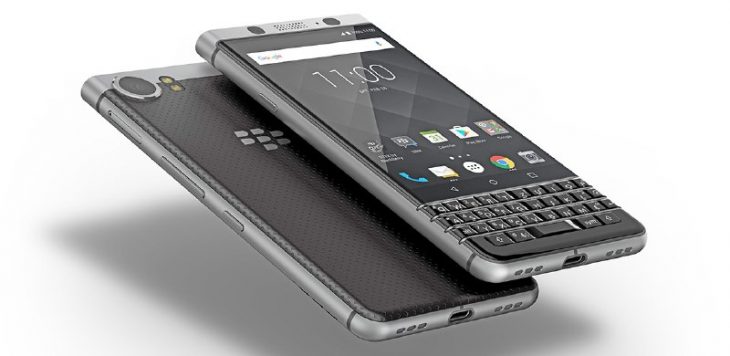


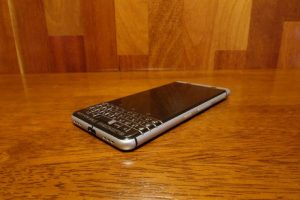
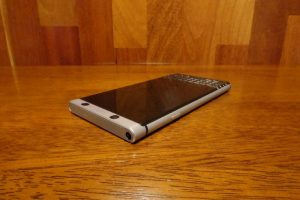
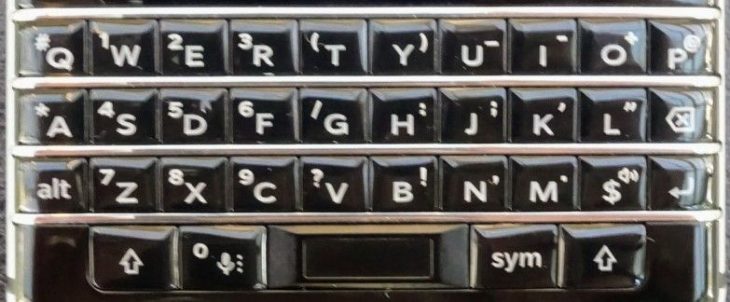
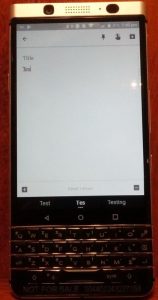
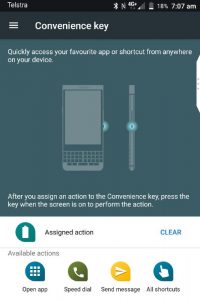



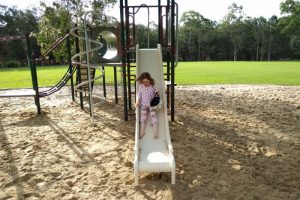
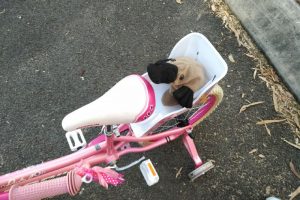
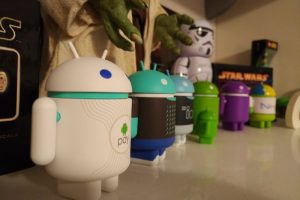




Good review, am a bit surprised you didn’t give the launcher and super productive shortcuts a shoutout. Programmable shortcuts are the main reason i’m still a BlackBerry user.
Demo here https://m.youtube.com/watch?v=KRloNzAngII.
Thanks.
Will it work with Telstra 4GX?
I used it exclusively on Telstra and had no issues and some impressive speeds
D
Hi, great review… where are the details on audio though? You give it an 8, but no further discussion. I have read audio quality is terrible, and this is the biggest thing holding me back from purchasing one.
Hey Michael, audio quality was fine, I gave it a 8 as it was a bit soft especially for podcasts, even with headphones I found it didn’t get as loud as my ageing ears would have liked.
Bluetooth was obviously fine 😉
Audio is fine. I can use android auto and talk handsfree with the car stereo on no worries. I did a headphone test when another reviewer said it wasnt loud enough and may have done permanent damage to my ear drums.
That said its no longer the ‘best’ sound which is slightly disappointing because the BlackBerry z30 and Passports were in a league of their own.
As a former Blackberry user, I think that TCL have absolutely nailed the design of this device. It looks great!
For day to day use, I’m not sure I could go back to a physical keyboard, having got so used to swipe-based data entry, although I think I’d much rather have this as my work phone than the iPhone that my workplace issues us with.
I think anyone would prefer anything that’s not an iPhone… 😉
Ha ha ha ha!
I won’t disagree with you there. My wife might, but I won’t.
Would you swap the pixel xl for the key one?
Hey there, if the KEYone was the only phone I used maybe, however, I bounce between so many devices that I kept getting confused between the physical keyboard and onscreen keyboard. I seriously want the rumoured touchscreen Blackberry, if it continues this trend it may just be one of the best Android Phones.
Is it good enough to switch to? Hell yes, it’s the muscle memory required to use the physical keyboard that makes me personally hesitant.
Duncan
Great answer Duncan.
By sticking with an all touch device you’re sacrificing the ability to utilise up to 52 Programmable homescreen Shortcuts that can perform tasks 2-4 steps within apps after only a single touch.